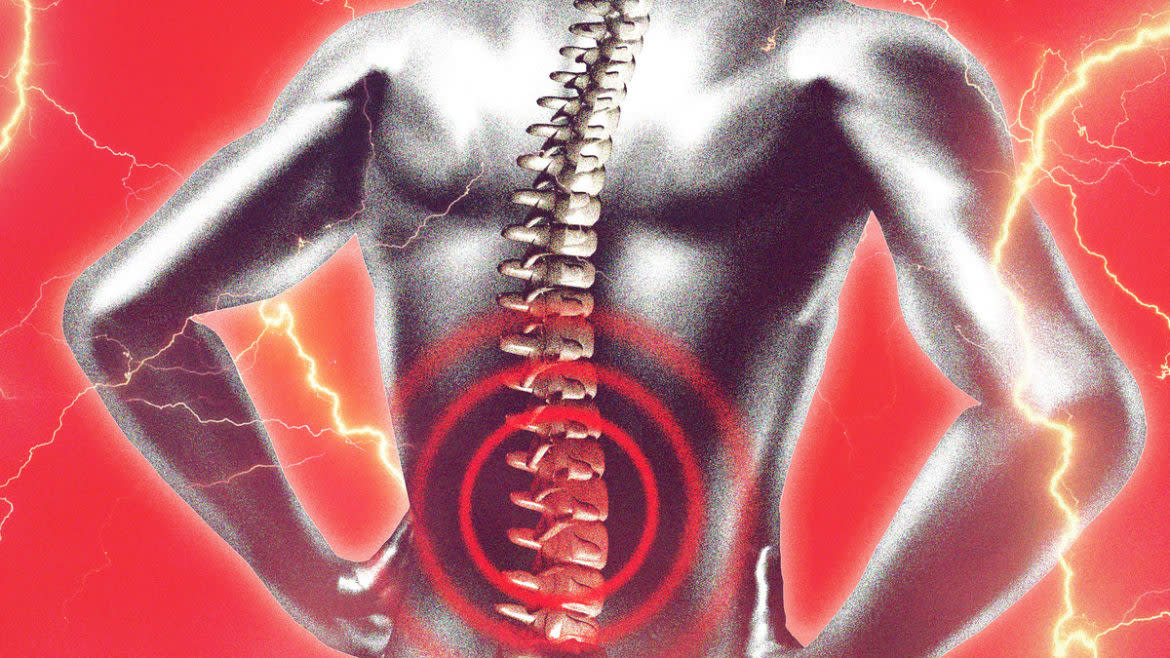This Device Zaps Your Spine to Relieve Chronic Pain

We take a lot for granted every day: food, clean water, our friends and family—you name it. Perhaps one of the most significant—but unnoticed—things is pain. Or, rather, the lack of it. But for the more than 50 million Americans who suffer from chronic pain, every single day is an agonizing reminder of that which many of us take for granted.
While chronic pain can have a lot of different causes ranging from physical injury, to disease, to neurological conditions, it’s completely debilitating to a person’s quality of life and even impacts their mental health. One common cause is diabetic neuropathy, which is nerve damage brought about by diabetes. It can lead to pain and numbness in a person’s hand and feet—and, if left untreated, can even lead to limb amputation.
“Diabetic neuropathy often results in poor quality of life, depression, anxiety and impaired sleep, and the available medications can be ineffective for many people or have side effects that people can’t tolerate,” Erika Petersen, a restorative neurosurgery researcher at the University of Arkansas in Little Rock, said in a statement.
We May Have Discovered the Missing Link Between Mental Trauma and Chronic Pain
Luckily, Petersen and her team released a study on Feb. 28 which found that a process called spinal cord stimulation (SCS) is shown to greatly relieve chronic pain from those with diabetic neuropathy. The researchers plan on presenting their findings this April at the American Academy of Neurology conference. “These results are exciting because there is an urgent need for more effective therapies,” Petersen added.
SCS typically comes in the form of an implantable device that’s placed at specific locations on the spinal cord. The device shoots regular electrical signals into the spine like a kind of pacemaker. This blocks pain signals from reaching the brain and thus relieving them of their chronic pain.
As promising as the device is, it’s still fairly new tech. In fact, the first SCS treatment was approved by the FDA in 2014 for only certain types of pain and nerve damage. More research needs to be conducted in order for regulating bodies to approve it for more applications—which is what makes the latest study for diabetic neuropathy so exciting.
An Old Diabetes Drug May Protect You Against Long COVID
The study’s researchers looked at 216 patients with chronic pain due to diabetic neuropathy who weren’t responding to medications. Half of the group received SCS along with regular medical treatments for six months. While the other half received only regular medical treatments.
The results were staggering. After six months, the SCS group reported a 76 percent decrease to their average pain. However, the group that didn’t receive the device had a 2 percent increase to their amount of pain. The SCS group also showed a 62 percent improvement of their motor function and reflexes—compared to the 3 percent improvement with those just receiving medication.
Following the six months, the patients could opt to switch to the other treatment. While none of the SCS group chose to switch, 93 percent of the medication-only group elected to receive SCS.
This Stem Cell Discovery May Help Fix Brain and Spine Damage
The study’s authors add that more research is needed to verify the findings. “Confirmation of results through studies in larger groups of people could further strengthen our understanding of this spinal cord stimulation therapy for the treatment of painful diabetic neuropathy,” Petersen said.
Of course, SCS hosts a ton of applications and promise outside of just diabetic neuropathy. Being able to provide those with chronic pain of all types a way of managing their condition outside of painkillers could also help drastically cut down on the nation’s prescription opioid epidemic, which affects 2 million Americans. A device like this can be truly life changing for these folks, whether their pain is caused by injury, physical disorders, or a disease like diabetes.
Got a tip? Send it to The Daily Beast here
Get the Daily Beast's biggest scoops and scandals delivered right to your inbox. Sign up now.
Stay informed and gain unlimited access to the Daily Beast's unmatched reporting. Subscribe now.


